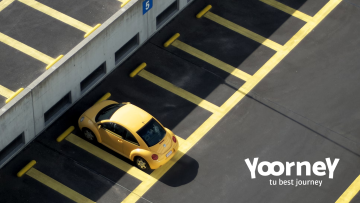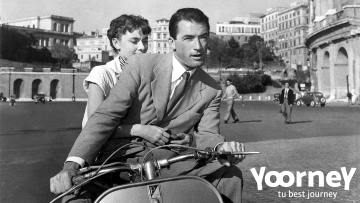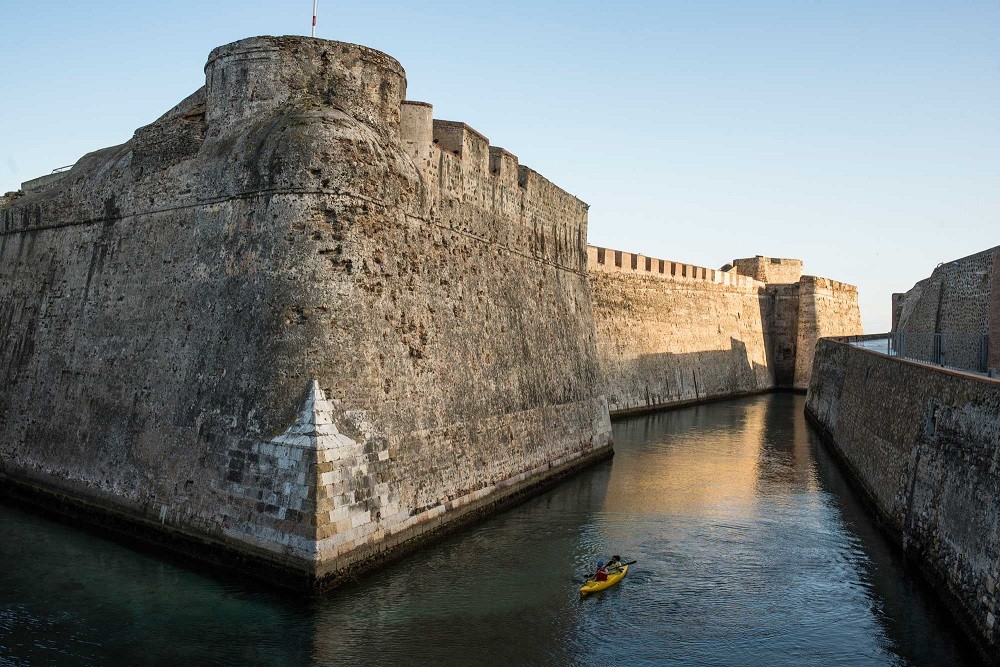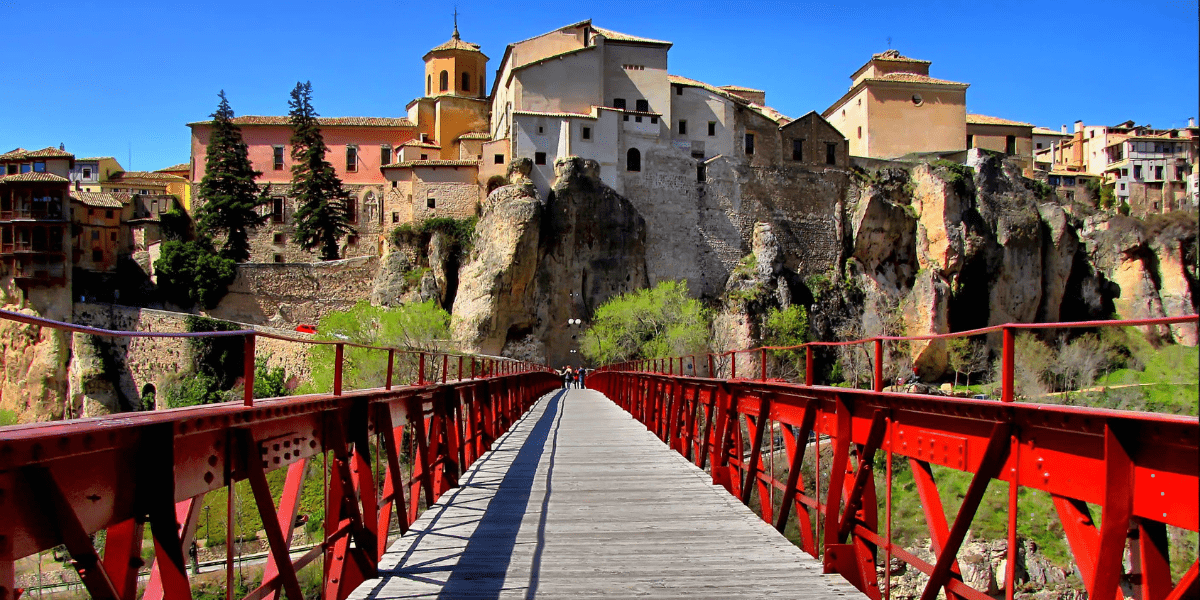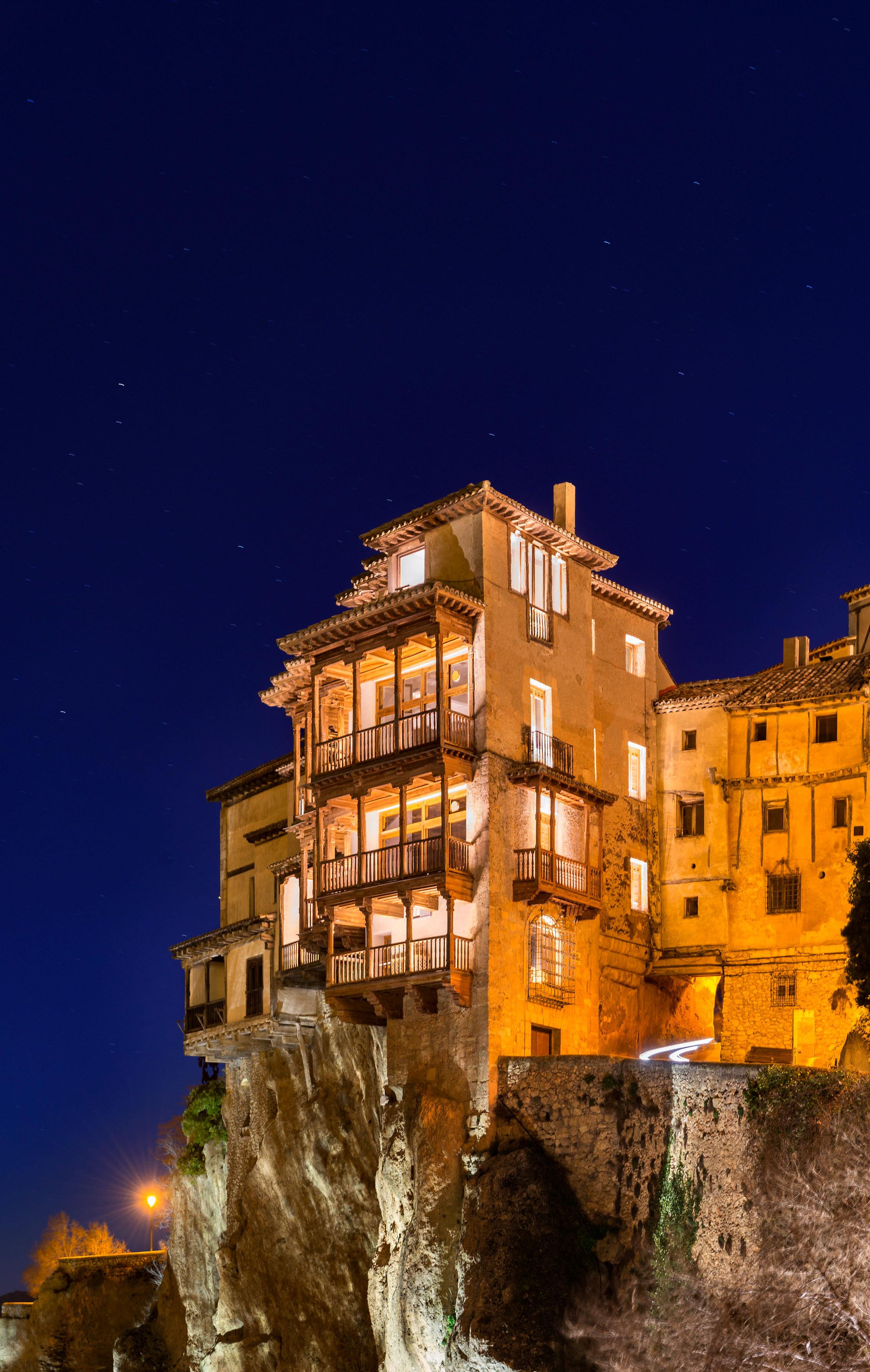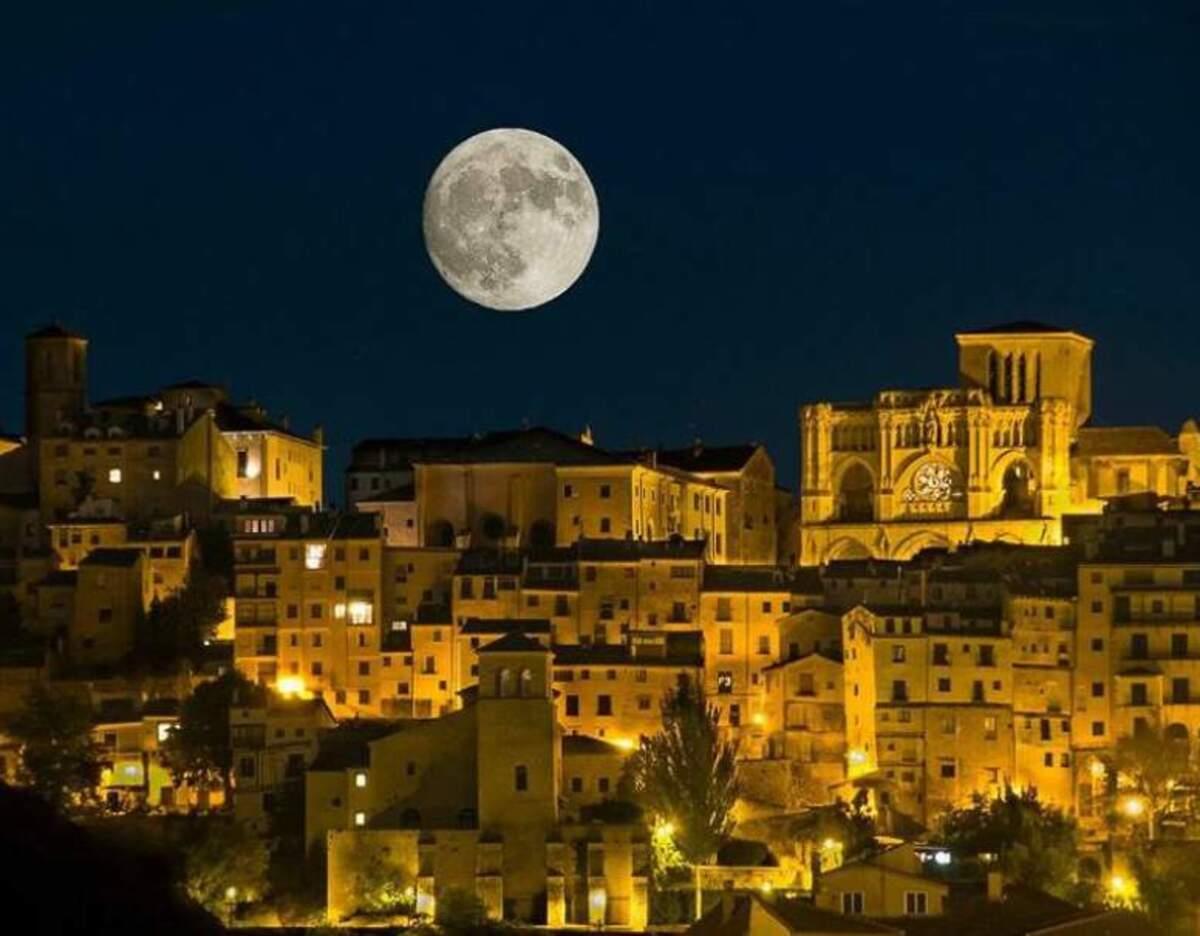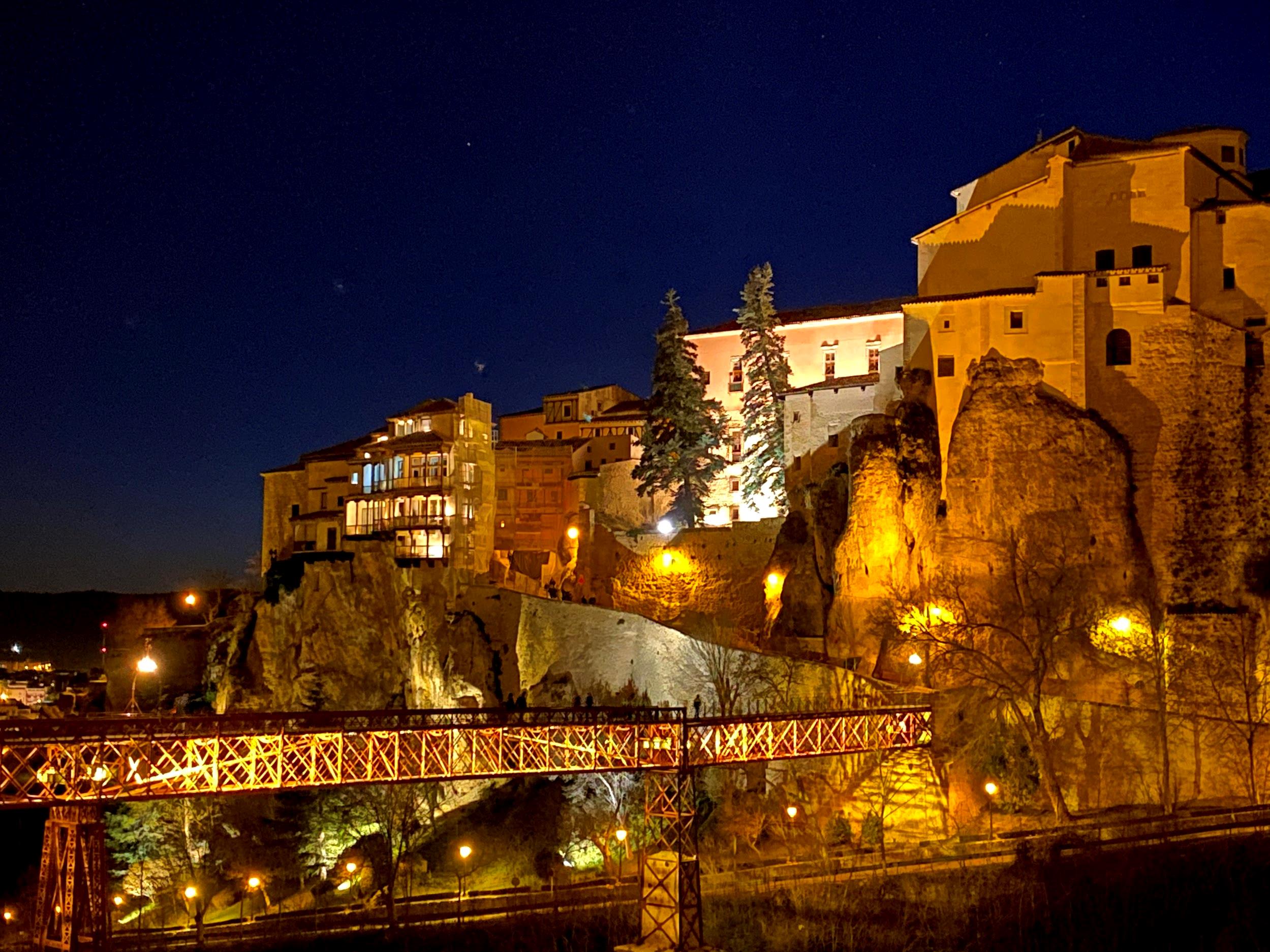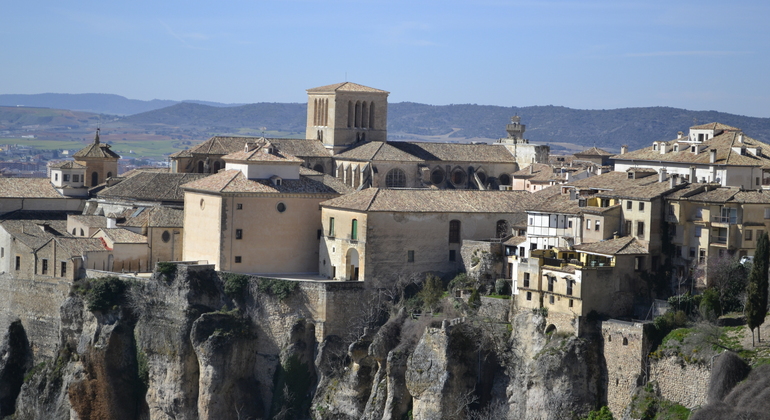1 - 3 days in Cuenca: The best things to do and visit
Cuenca is unique, this is the slogan and how this city is known, which attracts its visitors for its tourist offer, its delicious gastronomy and historical and cultural heritage.
It is one of the great unknown of Castilla-La Mancha, it is a perfect destination to explore on foot. The capital of Cuenca has been a place inhabited by dinosaurs, as by the first settlers in Prehistory, passing through the Romans, Andalusis, until reaching our days.
It has a beach! Curious, why? Something that leaves no one indifferent. Its Serranía has an area of 73,000 hectares, and since 2007 it has been the Serranía de Cuenca Natural Park. On this walk through the city of Cuenca you will discover everything that this historic World Heritage city has to offer.
How to plan my visit to Cuenca?
At Yoorney we have local tour guides who offer you the best selection of guided tours, free tours and excursions in Cuenca and in other cities around the world. A different and fun way to discover a city.
One of the biggest challenges of traveling is to really get to know everything you want about your next destination. We take care of that and show you each spot in a special way that makes you feel not just like another simple tourist.
Why visit Cuenca?
If you have in mind going to the capital of Cuenca, do you want to know the essential places to visit in Cuenca? This city houses a past of millions of years, a rich and very important history. Since the Upper Paleolithic there was already a population settlement, during Roman times the Serranía Cuenca was involved in different Celtiberian wars. It is true that there were three important Roman cities in the province: Segóbriga, Ercávica and Valeria, which meant that the Cuenca capital was sparsely populated.
During the Islamic expansion it will be when it takes Cuenca as such, since since 784 the city of Qunka or Kunka existed. The geographer Al-Idrisi said of her "Cuenca is a small, but old town. It is located near an artificial pond and surrounded by walls but without suburbs."
It is surrounded by spectacular landscapes, pink hills that are bordered by the gorges of Júcar and Huécar, by its mountains and its vertigo constructions, make it UNIQUE. Within Cuenca there are other tourist destinations that attract the attention of travelers, such as El Monasterio de Uclés, Las Torcas. These are the essential places to see and visit in Cuenca in 3 days (or a weekend getaway). Take note!
Cuenca: Top 12 things to do and must-see attractions
1. Las Casas Colgadas

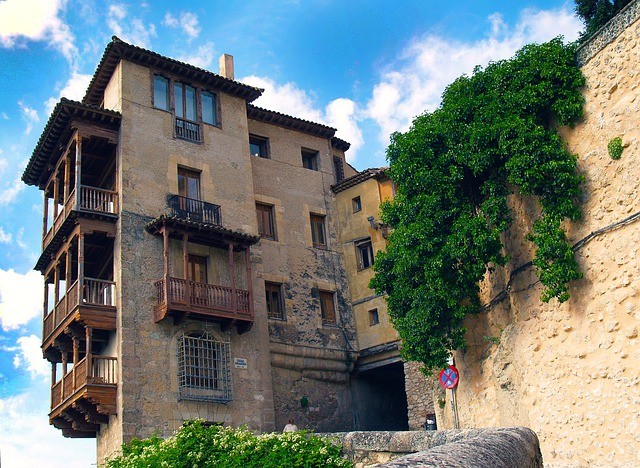
2. Plaza Mayor

- Town Hall: Close the square, the access from the lower part is maintained through its three characteristic arches, it is something peculiar, which was a challenge on the part of the architect (Jaime Bort). It is in the Baroque style, and on this arch two more rococo-style bodies rise.
- Episcopal Palace: A large building, which is adjacent to the Cathedral. Construction began in the thirteenth century, and expanded during the fifteenth and sixteenth centuries. In the 18th century the main façade was built in a neoclassical style. In one of its parts we find the Diocesan Cathedral Museum of Cuenca.
- Convent of Las Petras: Baroque building, made in the 16th century, with a very peculiar pink color and is finished off by a huge dome. What I create a set without equal.
3. Cuenca Cathedral
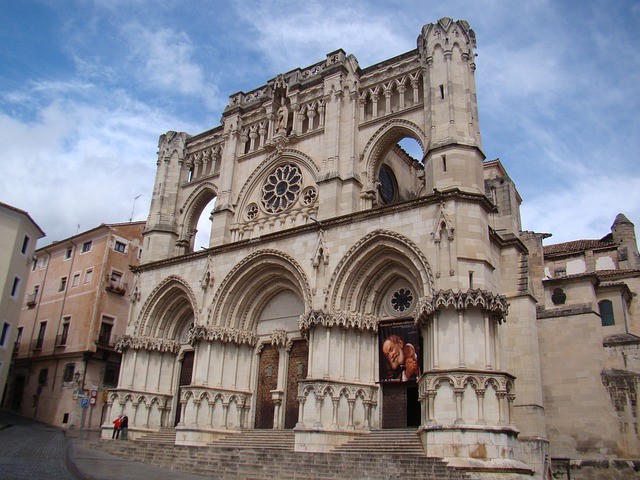
Mandatory stopping place in Cuenca. After the Christian conquest of the city on September 21, 1177, King Alfonso VIII ordered that the Mosque be consecrated and converted to Christian worship. In 1183 the city is constituted as an episcopal see.
The main temple of the Cuenca capital. He presides and stands out in the Playa Mayor, and where such emblematic acts take place, such as the song of the miserere on Good Friday at the end of the Camino del Calvario procession, popularly known as Las Turbas.
What to see and do in the Cathedral of Cuenca?
The Cathedral of Cuenca was consecrated in 1196 by Saint Julian, second bishop of the city, when he was still in the initial works.
Considered the first Gothic style to be carried out in Castile, it was definitively consecrated to Santa María in 1208 by Bishop Rodrigo Ximénez de Rada.
A few years after the Christian conquest of the city, the temple began to be built. By 1208 the High Altar was already consecrated, a fact that suggests that the head should have been completed in that year. Eleanor of Aquitaine and Plantagenet, managed to induce French architects to participate in the factory, so the building is included in the First French Gothic (12th century).
Architecture and interior of the Cathedral of Cuenca
Originally the church had a chevet with five staggered apses, where the central one is the most developed, but in the 15th century it was going to undergo important transformations. This ship was attached to another perpendicular headed, with a body of three naces. In the transept, an octopartite vault would be erected, which will serve as a supporting base for the Torre del Ángel, which has a square base and an octagonal base in the upper part.
Externally, the Cathedral has undergone numerous transformations, the one that stands out the most is that of the main neo-Gothic façade, made at the beginning of the 20th century, with original Gothic components and 17th century barracks.
At the beginning of the 20th century the Torre del Giraldo collapsed, with this, part of the facade was taken away, and for this reason a new project of enclosure of the ships arose that was not seen to completion, it is more, it can be seen in towers that are unfinished and some ornamental elements.
The façade is imposing, with three pointed arch doors and at the top also pointed arches and a central rose window, which is topped by a porticoed gallery. In the lateral naves the windows are circular, as in the central nave.
The Cathedral of Cuenca is perfectly adapted to the city, it is an exemplary and magnificent work, a sample of art and history.
- July 1 to November 1 Monday to Sunday from 10:00 a.m. to 7:00 p.m.
- November 2 to March 31. Sunday to Friday from 10:00 a.m. to 5:30 p.m. Saturday and holidays from 10:00 a.m. to 7:30 p.m.
- April 1 to June 30. Sunday to Friday from 10:00 a.m. to 6:30 p.m. Saturday and holidays from 10:00 a.m. to 7:30 p.m.
4. St. Peter’s Church

5. Barrio Judió o Barrio de San Miguel

6. Barrio del Castillo

7. La Calle Alfonso VIII

8. Mangana Tower

9. Barrio de San Martín (The Skyscrapers of Cuenca)

10. Ronda de Julian Romero

11. El Salvador, San Juan and La Trinidad

12. Los Miradores de Cuenca.
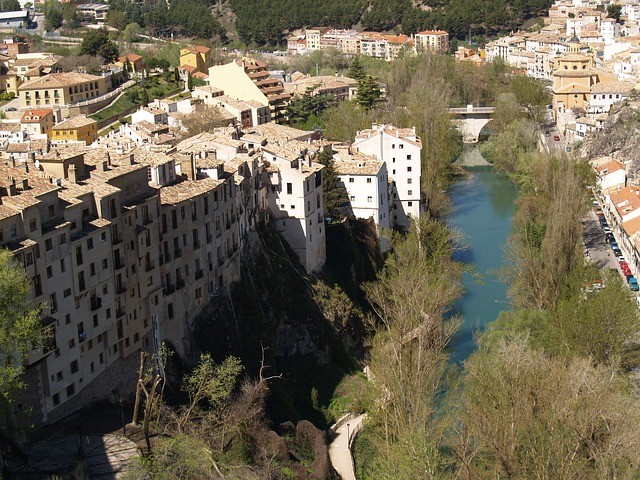
Cuenca has privileged views and landscapes. When you visit this city, at least you have to look out breathe fresh air and let yourself be carried away by the peace it transmits.
We cannot forget that this beautiful city is located between two gorges, the river Júcar and the river Huécar. This causes that from the old town you have unparalleled views.
The best viewpoints in Cuenca.
- The one with Gregorio de la Llana
- Castle Quarter
- The Hoz del Júcar
- Mangana Square
- San Miguel
- Bezudo Arch
- Florencio Cañas
- Painter Victor de la Vega (next to the Christ of the Passage)
Get ready to take thousands of photos and have unique images!
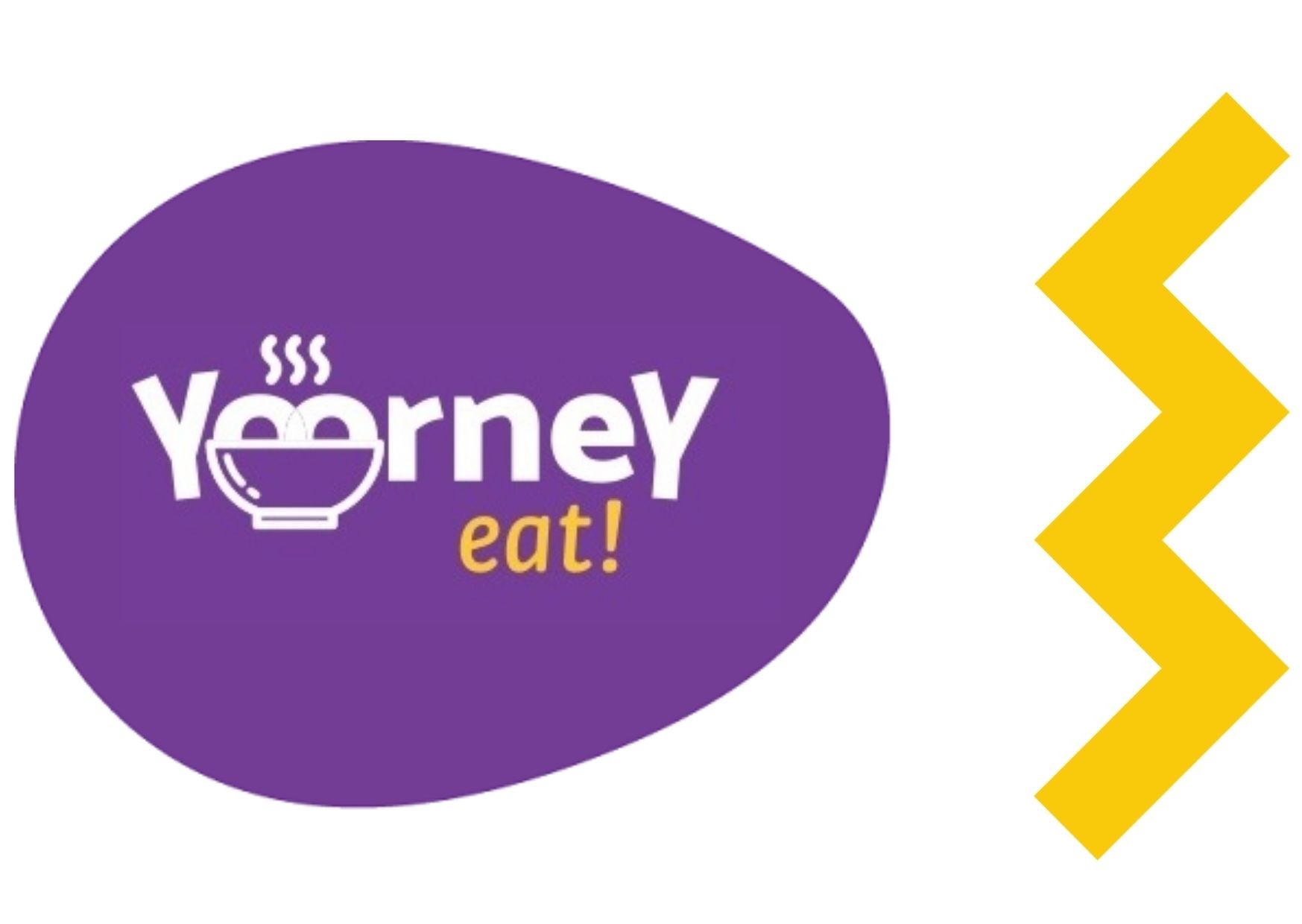 Where to eat in Cuenca?
Where to eat in Cuenca?
6 places to eat in Cuenca

-
Restaurante El Banzo: We were delighted, it had been recommended to us because it was the Antigua Casa Eladio. It is located in the Parque del Huécar, in the downtown area of the city. We ordered morteruelo and lamb shoulder, it was touching heaven! Spectacular.
- Taberna Albero: It has a great location, combining traditional food with elements of Asian cuisine. The chicken breasts are soy sauce and honey and the bao bread with shredded lamb is a scandal! And to crown it for dessert the chocolate sausage.
- Raff San Pedro: Very close to the cathedral, we ordered ajoarriero and some migas, they also have local wines, which is the perfect combo. All exquisite!
- Tasca del Arte: Good ubication. A lovely place, here we could taste the porridge, ratatouille with egg. All great and an exceptional quality price. They also invited us to a shot of resoli, a typical liquor from Cuenca.
- Restaurante San Juan Plaza Mayor: An unbeatable location, between the Town Hall and the Cathedral, it has a daily menu both on weekdays and on weekends.
- Asador María Morena: It is very curious that at the door there is a monument to the visitor, that already invites you to enter. It is right at the Mirador del Barrio del Castillo, which makes it have privileged views. We ate deer chorizo, gazpacho pastor, and the best thing was the wine we chose to accompany the meal, a "Dominio de Fontana". I understood the gods when they drank ambrosia!
10 typical dishes of Cuenca

- Ajoarriero: It is made from potatoes, garlic, eggs and olive oil, and then it is crushed in a mortar. It is considered that the origin is found in the muleteers, who used this formula to preserve food during long journeys and months at the fair. Gradually, it was carried out in inns and sales, and thus it became popular gastronomic culture. In areas of La Mancha it is known as atascaburras. It is a delicacy that you cannot miss.
- Morteruelo: Dish of medieval origin, which is born in Cuenca. It is a strong stew, which is made with pork liver, small game meats and poultry (pork loin, chicken or rabbit or hen) and seasoned with spices and grated hard bread, and everything is crushed and mixed in a mortar. , hence the name it has. Do not stop to think what ingredients it contains, try it, it is an addictive delicacy !!
- Pastor Gazpacho: As its name suggests, it is a simple, shepherd's dish. They made it with the ingredients they had on hand. It is a very representative dish of Cuenca. It is made with different types of game meat and a kind of omelette is made and is accompanied by grapes.
- Zarajos (of Tarancón): They are made with lamb meat, specifically with the most tender casings, a skein is formed around a piece of cane. It is presented cut into slices, they are passed through the grill with a little olive oil or you can add garlic and parsley and lemon or without anything. Although they say they are from Cuenca, and you will find them in bars or restaurants. The reality is that they are original and typical of Tarancón, a town in the province that is close to the capital.
- Gachas: They are salty!! They are made with almortas flour (which he takes from a legume). It is a traditional dish in the Castilian gastronomy of La Mancha. The pork meat is first fried and then in that oil the pea flour mixed with the paprika is fried and water is added, stirring until it thickens. Serve it, and dip bread With this food then you have to do a good hiking route, because you will be prepared to endure it and not be cold. One of the best dishes!
- Migas: It is the demonstration that the grandmother works miracles with what is left over. They are made with stale bread cut into small pieces, they are fried in the oil to fry the meat (the same as with the porridge) and with some garlic, they are well patched that they are fried but without overdoing it. When they are ready to eat, they are accompanied with grapes and with the meat, chorizo.
- Cheeses: Cuenca and province, and the Autonomous Community of Castilla-La Mancha itself, has exquisite and unique cheeses in the world, which has its own Designation of Origin. In addition, some have achieved "the Oscar" for the best cheese, as in the case of the cheeses from the Quesos Artesanos Villarejo cheese factory in the town of Villajero de Fuentes.
- Alajú: It is a sweet type of Cuenca, made with honey. Essence of orange and toasted almonds and covered by wafers. The name of this dessert comes from the Andalusian period, which means "like God".
- Resolí: It is the typical liquor of Cuenca. It has a very characteristic flavor, it is usually taken alone or with ice after the meal, and it can be accompanied with a sweet. The recipe is almost secret, little is known about it, it includes anise and coffee.
- Denomination of Origin Wines: If you go to Cuenca, you must try its wines, because they pair with any dish of its gastronomy. You will find several D.O .: D.O Vinos de Úcles, D.O. Ribera del Jucar Wines, D.O Vino de Manchuela.
 Cuenca with children
Cuenca with children
Paleontological Museum of Castilla-La Mancha
Do you know what Jurrasic Park exists and is in Cuenca? It is so, and our dear friend Pepito the dinosaur who will make you a wonderful visit to his house, the Paleontological Museum and do different workshops.
During the tour of the different rooms you will find spectacular reproductions and a large quantity of the remains that have been found in different sites in the community, where some are more than 550 million years old.
The little ones (and the big ones) will love the world of dinosaurs. Only here some species can be seen, play to find them!
Tourist Train

If you decide to go to Cuenca with the children, an easy and comfortable way to see the city and discover it is the tourist train. Where you can visit the main monuments and streets of the city, but in a relaxed and quiet way. In an hour of travel, you will discover quite a few curiosities of this city.
Castilla-La Mancha Science Museum

In this place, it is not just a museum, inside it you can see what different elements that we find in our day to day smell smell like. But best of all, it has a time machine, where when you ride you will go until more than 1 million years ago and discover the mysteries of Evolution and life.
You will meet astronauts, you will discover the secrets that meteorology keeps, the exploration of Mars. You can see how our human body works when we are asleep or awake.
In the Planetarium you will have the opportunity to take a 3D trip through the Universe, seeing and almost being able to touch the planets, satellites and stars that surround us.
On the website of the Museum of Sciences of Castilla-La Mancha you can find all the information about schedules, rates, guided visits, workshops.
The Eyes of the Moor

Cuenca is located between two gorges (Júcar and Huécar), and if you suddenly feel observed by the mountain, do not fear, they are the eyes of the Moor! In all this there is a legend; the one that says that after the Christian conquest of Cuenca, some Andalusians decided to stay, and how could it be otherwise, the love was born between a beautiful Muslim woman and a Christian soldier, it was a forbidden love, they had to see each other in secret. They wanted to marry the young woman to a Muslim, whom she rejected and he wounded, decided to follow the young woman and discovered her secret.
The young Christian and the beautiful Muslim decided to marry in secret, the young woman stayed for hours and hours waiting for her loved one to come, but she never appeared, because ... if you want to know more, go see this magical place.
The Enchanted City

If you go to Cuenca with children, visit the Enchanted City, you cannot miss it, here you will enjoy young and old. It is located in the Natural Park of the Serranía de Cuenca, the Enchanted City. It is an enclave with more than 90 million years. The erosion of water, wind and ice has been shaping this place. It is a circular route, approximately three kilometers long, which is perfectly signposted. During the tour you will have the opportunity to contemplate the curious shapes that have been formed, such as the famous screw, the crocodile ... you must let your imagination fly.
The Route of Faces

It is next to the Buendía Swamp. In this place you will be able to contemplate how the rocks of the swamp have nothing more and nothing less than 18 sculpted faces and some reach up to 8 meters high. It is a free and short route, so you will have time if you want to know the environment.
 Pet-friendly Cuenca
Pet-friendly Cuenca
You're a #petlover and are looking for the perfect holiday plans to enjoy with your furry friends? The province of Cuenca invites you to enjoy the landscape and the song that awaits. In an environment of a medieval city, of Roman remains, of mountains. Towns and corners full of history await you and your pet.
Tourism and getaways with pets have grown in Cuenca over the last few years. More and more hotels and restaurants have hung the Pet Friendly sign on their doors. A getaway with your dog is one of the most unforgettable adventures you can have.
Cuenca is a #petfriendly city and that is how we have lived it. We have been able to do a lot of activities with our dogs! While other cities are still "not so modern" in this sense, it is not the case with Cuenca.
Places to go with dogs in Cuenca

- Old Town: You can breathe that essence of a medieval city, we kick the area without leaving a corner without seeing.
- Ruins of the Castle. They are from Roman times, currently there are only remains, but it is a place where the views of the Hoz del Huécar and the Hanging Houses are impressive.
- Birth of the Cuervo River: It is a beautiful place. It is located at more than 1400 meters high, take into account the time of year in which it leaves, since it depends on the moment it drags more or less water as it is a birth. The best time to go is winter or spring.
- Los Callejones de Las Majadas: It is in the highlands as well, and it is a magnificent place to disconnect and for our pet to enjoy, and it was also the scene of one of the 007 movies "The World is Never Enough."
- Places to eat: the vast majority allow entry with dogs. A stamp indicates it on the door but do not hesitate to ask an employee. We had no problem.
Pet-friendly hotels in Cuenca

If you are one of those who like to travel with your dog, there are more and more hotels that allow pets.
- Casa Botes. Calle San Vicente,6. Cuenca 16001
- Green River Hostel. Avenida Virgen de la Luz,15. Cuenca 16002
- La Casita de la Abuela Paula. Paseo del Júcar, 25. Cuenca 16002
- Hostal La Ribera del Júcar. Paseo del Júcar, 17. Cuenca 16002
- Hotel Boutique Pinar. Camino de la Pernala, Km 174 Nacional 400. Cuenca 16195
- Hotel Leonor de Aquitania. San Pedro, 60. Cuenca 16001
Accessible Cuenca
Adapted tourism still seems a pending issue for many provinces, is this the case in Cuenca? We were able to experience it first-hand and here are some of our favorite adapted and accessible places:
- Historic Center: It is true that due to its location in between two gorges, it causes the old part of the city to have slopes, cobbled and narrow streets. But while it is true, that as a whole it is passable. In addition, having a tourist train allows you to see the whole of the old area without problem.
- Museums: The various museums that the city has, the Science Museum, the Paleontological Museum, the Holy Week Museum, are completely accessible, a marvel in the different aspects and fields that each one covers.
 Nightlife Cuenca
Nightlife Cuenca
Love for beer in Cuenca

If you like to go for beers, and you go to Cuenca, you cannot leave the city without trying the Taberna Jovi. Beer lover's heaven! You have to choose from more than a hundred from different countries, but you cannot leave without drinking a Cuenca craft beer that was awarded in 2015 and 2016 in Brussels.
Cocktails in Cuenca

Live music in Cuenca

Cuenca has concert halls and a musical program that you are going to love. If you like live music, you have to stop by Sala Babylon, where we can enjoy the best local and national musical groups. Cafe K-PHE Hispano, in addition to live music, we also find temporary exhibitions.
Nightclubs in Cuenca

In Cuenca, the place to party and enjoy a good atmosphere and music of all kinds is La Calle, it is a narrow street where you can find different discos and pubs
The best nightlife in Cuenca. Perfect for having the first or last drink of the night.
How to get in Cuenca?
How to get to Cuenca by car

The most common option is by car. Although it all depends on the origin. We recommend accessing through the A-40 from Madrid and that connects with the A-3 at the height of Tarancón. From Valencia the ideal is to take the A-3 motorway towards Madrid. If we come from Andalusia, the best option is to take the A-4 until we reach the Ocaña detour and take A-40 that goes directly to Cuenca. If we come from the Almería area, we take the A-7 and then the A-30, which is the one that connects us with Albacete.
How to get to Cuenca by train

How to get to Cuenca by bus

If you decide to do it by bus, the Avanzabus company has connections with different parts of the province, Spain and Portugal. The bus station is located at Calle Fermín Caballero, 20.
The Rubiocar company connects with towns in the province.
How to get to Cuenca by plane

To get to Cuenca by plane, the closest international airports are the Barajas-Adolfo Suarez Madrid Airport and the Valencia Airport, the first one is at one hour and thirty-eight minutes and the second at two hours and eight minutes.
How to get around Cuenca

- Bus
- Bike
- Taxi
33 most beautiful towns to visit in Cuenca
- Ucles

- Noheda
- Valeria
- Beteta
- Uña
- Las Majadas
- Villalba de la Sierra
- Arcos de la Sierra
- Boniches
- Sailices- Yacimiento arquelógico de Segobriga
- Belmonte

- Huete

- Alarcón
- Buendía
- San Clemente

- Priego

- Villanueva de la Jara

- Huélamo
- Castillo de Garcimuñoz

- Enguídanos
- Cañete
- Mota del Cuervo

- Santa Cruz de Moya
- La Huerta del Marquesado
- Buenache de la Sierra
- Arcas y Villar del Saz de Arcas
- Minglanilla
- Carboneras de Guadazón
- Cardenete
- Cañada del Hoyo
- Cañizares
- Landete
-
Tarancón

Cuenca general information
GIFTS AND SOUVENIRS OF CUENCAMagnet of the Hanging Houses Resoli Bottle of the Hanging Houses Alajú DO Úcles wine and wine products |
WHERE TO FOR A RUN IN CUENCA |
CUENCA CULTURAL AGENDA |
WHERE TO STAY IN CUENCA |
SHOPPING IN CUENCA Carreteria street |
CUENCA TRAVEL GUIDES |
Map of Cuenca
How to use the interactive map of Cuenca?
We have indicated different colors for each area of recommendation.
Cuenca Transport Map
| The best way to see and visit Cuenca: Take a free tour |




